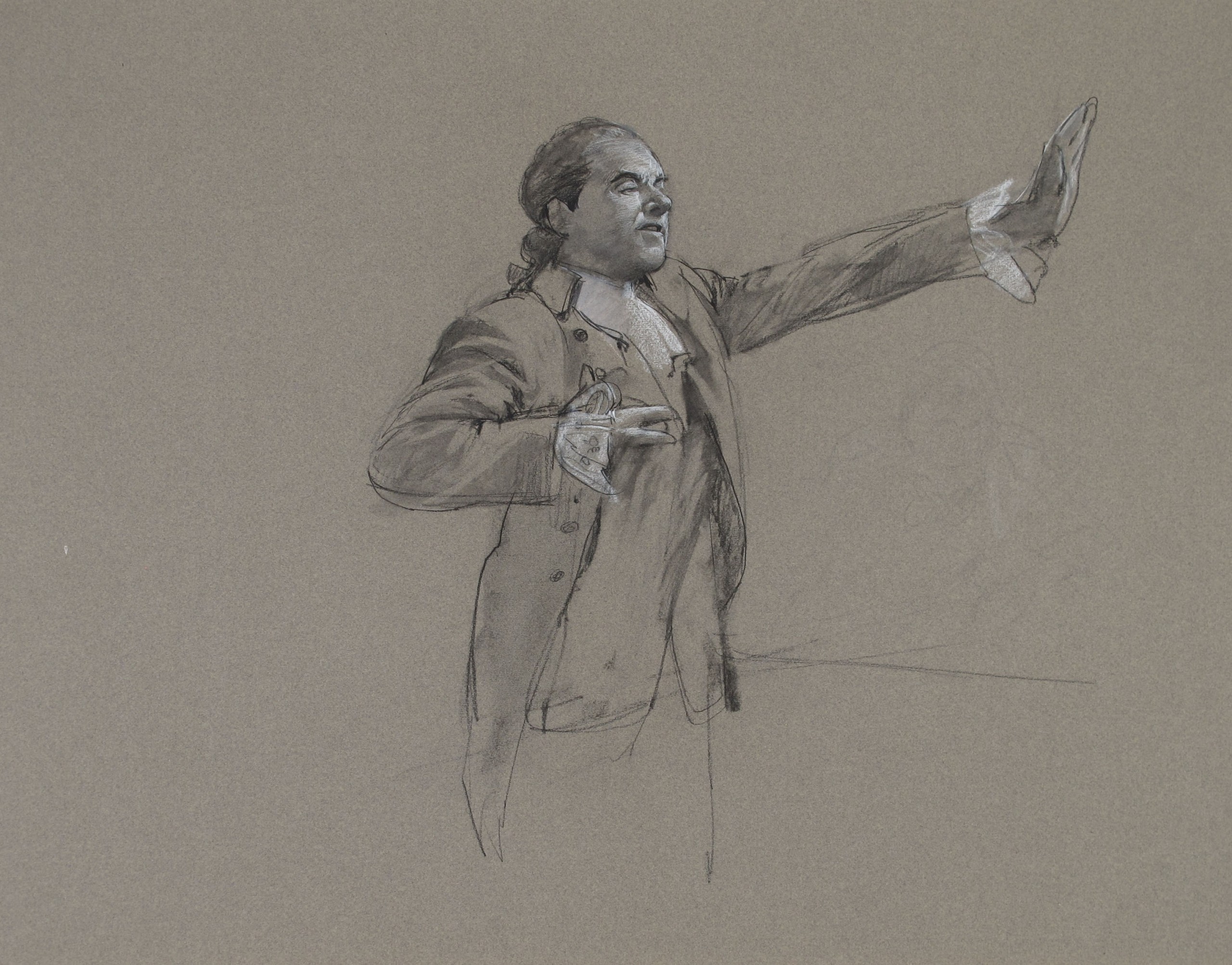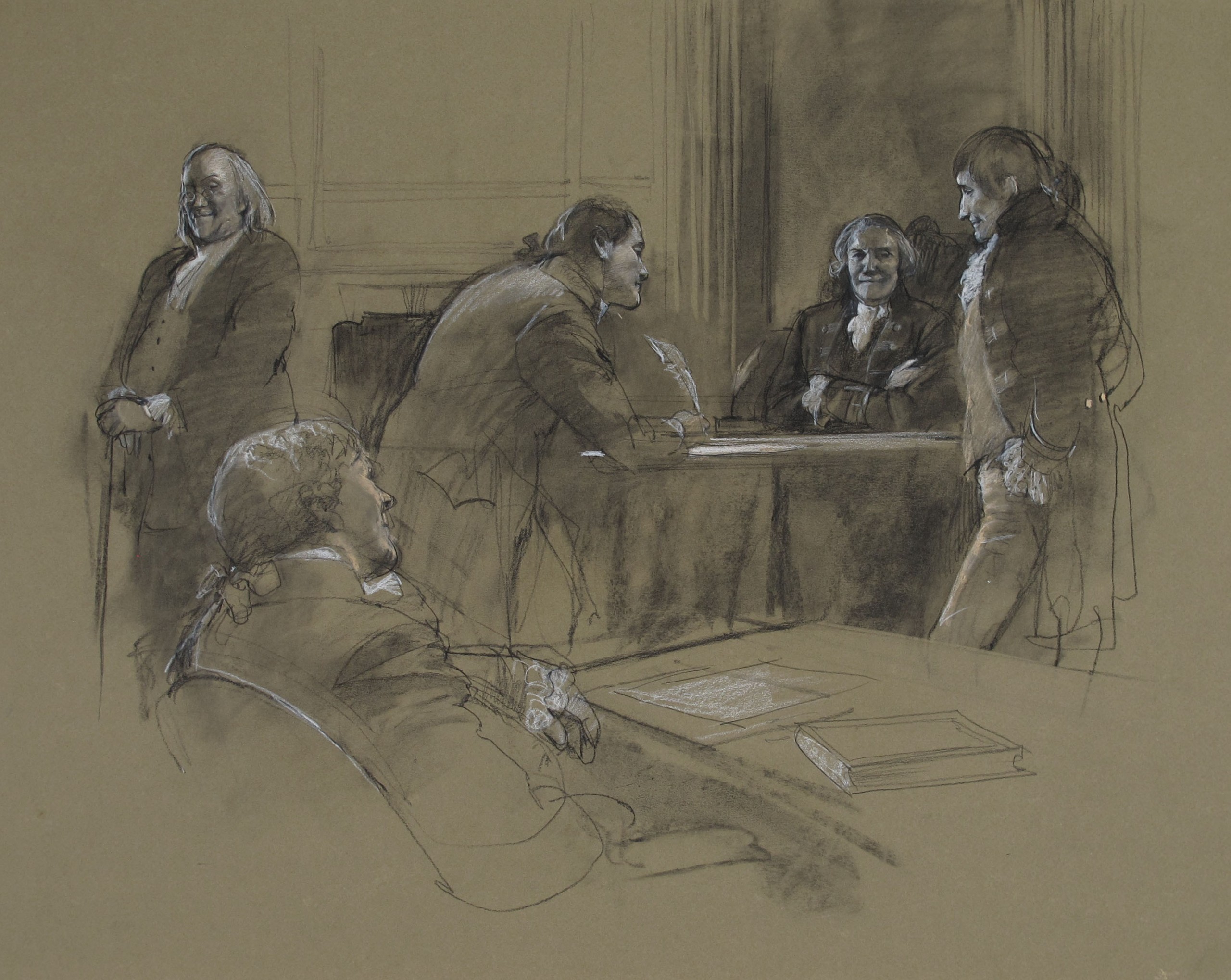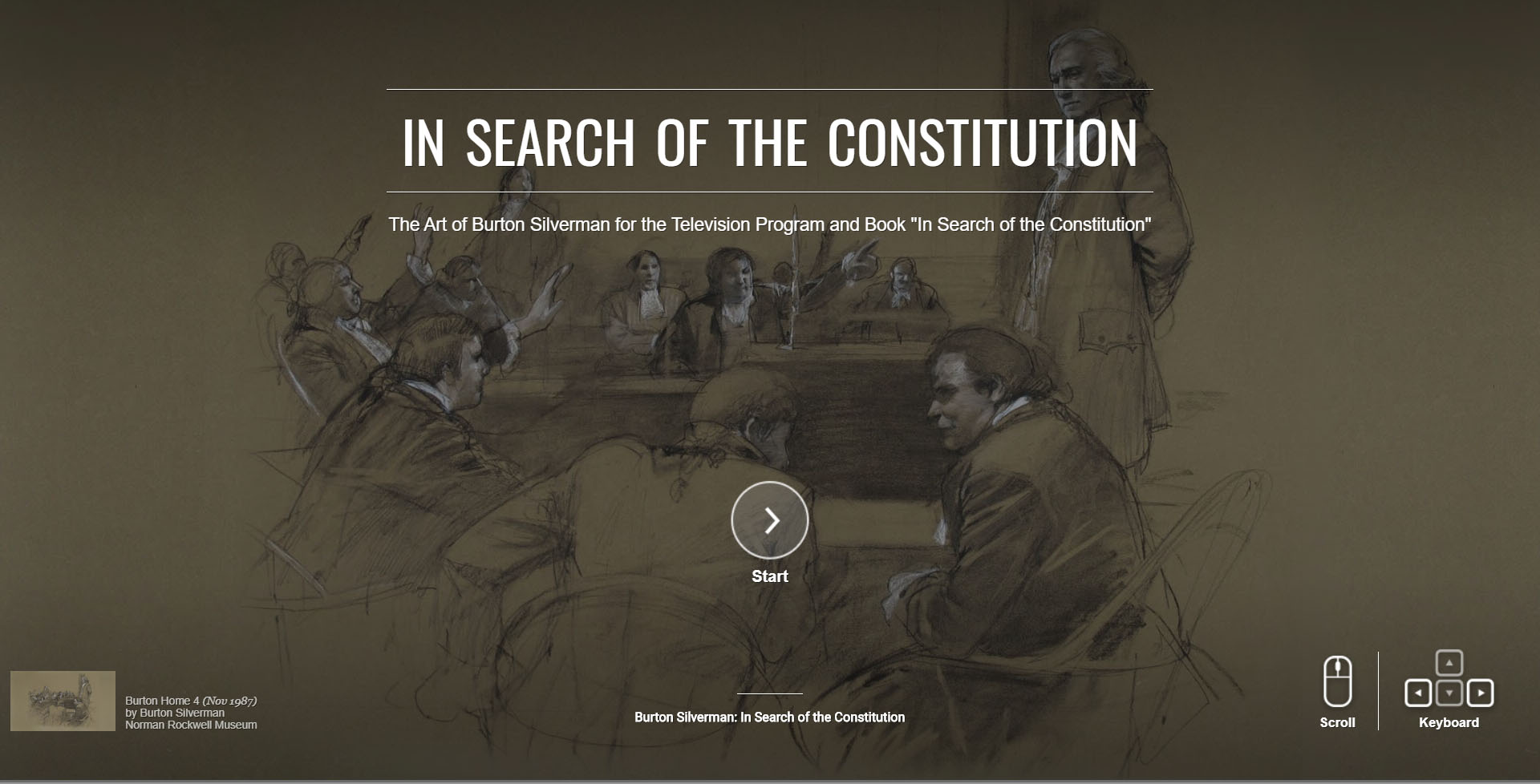Burton Silverman: In Search of the Constitution
ABOUT THE EXHIBITION
In American history, no document has sparked as much reverence, discussion, and controversy as the Constitution of the United States. But how does it affect our everyday lives, and how do ordinary citizens, legal scholars, and Supreme Court justices interpret it?
Burton Silverman’s drawings were designed to help viewers visualize the founding fathers as they debated, drafted, and signed this historic document at the Philadelphia Constitutional Convention of 1787. Historical accounts of the four-month-long gathering and antique portraits of its participants aided the artist in his reconstruction. His fifty resulting artworks appeared on In Search of the Constitution, a television series by journalist and political commentator, Bill Moyers, and in a related book. The series was produced to mark the Constitution’s bicentennial, delving into the fascinating history and contemporary relevance of the ultimate law of the land.
We are honored to have received the works on view as a gift from the artist to the Norman Rockwell Museum’s permanent collection of illustration art.
The Constitutional Convention of 1787
In the midst of the American Revolution (1775-1783), when thirteen colonies fought for independence from Great Britain, a central government was established through the creation of the Articles of Confederation, which served as the new nation’s first constitution. Though a significant step toward independence, the Articles created a loose confederation of sovereign states with a weak central government that did not have the authority to raise taxes, regulate commerce, or negotiate treaties. This posed a challenge during the war, because the confederation and its Congress had no ability to raise the funds needed to pay its soldiers or satisfy foreign debts.
To remedy these deficiencies, fifty-five delegates from twelve states (Rhode Island did not attend) including George Washington, James Madison, and Benjamin Franklin met at the Pennsylvania State House in Philadelphia on May 25, 1787 for a Constitutional Convention. In the heat of the summer, from May to September 1787, two outlines for a new national government were put forth, The Virginia Plan and The New Jersey Plan. Despite rigorous debate, delegates found points of compromise to ultimately shape the nation’s founding document, the United States Constitution.
Finally, thirty-nine of the fifty-five delegates supported the adoption of the new Constitution, which established America’s national government and fundamental laws, guaranteeing certain basic rights for its citizens. A signing ceremony was held on September 17, 1787, though Governor Edmund Randolph and George Mason from Virginia, and Elbridge Gerry from Massachusetts, chose to refrain; they believed that the document was flawed because it did not contain a legitimate Bill of Rights to protect the freedom of individuals against the new national government. After ten months of public and private debate, votes by the nine states needed to ratify the Constitution were secured, and the new government was launched on March 4, 1789. On May 29, 1790, Rhode Island became the last state to join the Union.
ABOUT THE ARTIST
A masterful realist illustrator and painter, Burton Silverman was born in Brooklyn, New York, in 1928; he received a Bachelor of Arts degree from Columbia College and studied at the Art Students League and Pratt Institute. Pursuing a dual career as an illustrator and gallery artist, Silverman has created artworks for many publications, and is perhaps best known for Aqualung, his iconic 1971 album cover for the rock group, Jethro Tull. Inducted into the Illustrators Hall of Fame in 2001, he has shared his knowledge as a teacher at the School of Visual Arts, the Art Students League, National Academy School of Fine Arts, Academy of Art University in San Francisco, Brigham Young School of Fine Arts, and as Smith Distinguished Visiting Professor at the George Washington University in Washington, DC.
MEDIA
Exhibition Video
Published: March 2020
Experience this Exhibition Virtually
This exhibit, along with three other exhibits, has also been made available as virtual exhibition on the Museum’s Google Arts and Culture page.
VENUE
Norman Rockwell Museum, Stockbridge, MA July 12, 2020 through September 2020
DIRECTIONS
Norman Rockwell Museum
9 Glendale Road Route 183
Stockbridge, MA 01262
413-931-2221
Download a Printable version of Driving Directions (acrobat PDF).
Important note: Many GPS and online maps do not accurately place Norman Rockwell Museum*. Please use the directions provided here and this map image for reference. Google Maps & Directions are correct! http://maps.google.com/
* Please help us inform the mapping service companies that incorrectly locate the Museum; let your GPS or online provider know and/or advise our Visitor Services office which source provided faulty directions.












